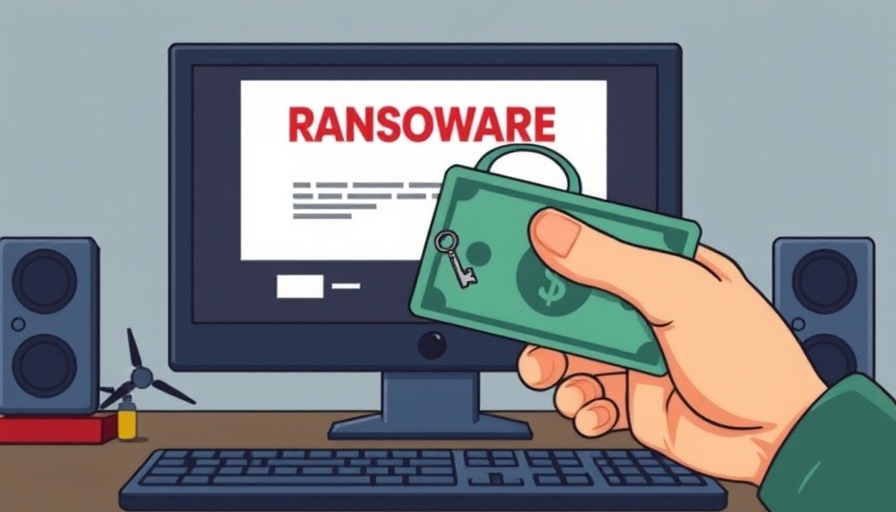
The Alarming Rise of Data Theft in Cyberattacks
Recent research highlights a daunting reality: data theft drove an astonishing 94% of all global cyberattacks in 2024. This staggering figure epitomizes a troubling trend where ransomware groups are not only extorting organizations through encryption but are now also stealing sensitive data to threaten leaks on the dark web. Such tactics leave victims in difficult predicaments, often facing the unenviable choice of either paying a ransom or risking severe repercussions of data exposure.
Complexities of Ransomware: A Shift in Strategies
As detailed in BlackFog's recent Ransomware Trend Report, ransomware tactics have evolved significantly, posing unprecedented challenges for businesses. Ransomware attackers now commonly incorporate double and triple extortion methods, where stolen data is encrypted, and the threat of exposure is used to coerce organizations into compliance. The report indicates that in 2024, attackers averaged an alarming 592 GB of stolen data per incident. With the average cost of a ransomware attack that involves data theft now reaching $5.21 million, the financial implications are felt keenly across industries.
The Role of Technology: An Invitation for Exploit
Cybercriminals are now adept at leveraging legitimate enterprise tools, which facilitate smoother infiltration and data exfiltration without setting off alarms for security protocols. According to BlackFog, PowerShell was implicated in 56% of ransomware incidents, highlighting the alarming possibilities when valid software can be weaponized against organizations. This manipulation of legitimate tools, coupled with the proliferation of new ransomware strains and Ransomware-as-a-Service models, has only added layers of complexity to the cybersecurity landscape.
Ransomware's Victims: Who is at Risk?
Particularly vulnerable to these threats are sectors like health care, manufacturing, and retail, which saw reported ransomware incidents peak dramatically. Recent high-profile cases involving firms such as Starbucks and Sainsbury's, with disclosed attacks in the retail sector spiking by 96%, showcase the specific targeting of industries holding sensitive consumer and business data. With the demand for instant data availability and service uptime, these sectors find themselves in a precarious position where the pressure to pay ransom is immense.
Government and Global Response to Ransomware Threats
To combat growing ransomware threats, governments have begun to tighten regulations and increase collaborative international efforts. Initiatives such as mandatory incident reporting aim to curb the epidemic by enforcing penalties for non-compliance and promoting proactive cybersecurity measures among organizations. Notably, the recent sanctions against Russian cybercriminals underscore a global understanding that cooperation is vital in dismantling the infrastructure supporting ransomware activities.
Looking Ahead: Preparing for Evolving Cyber Threats
As 2024 has demonstrated, the landscape of cyber threats is continuously shifting. Executives and decision-makers should take cognizant steps towards enhancing their cybersecurity posture, including investing in advanced endpoint technologies and conducting regular employee training on cyber threats. With AI technology rapidly becoming a tool for both sides—cybercriminals and cybersecurity professionals—the need for organizations to adapt to these changes becomes even more crucial.
The escalating trend of data theft and ransomware not only threatens critical data infrastructure but also influences overall business integrity and public trust. As organizations navigate these threats, staying informed and proactive will be essential in effectively mitigating risks associated with cybercrime.
 Add Row
Add Row  Add
Add 


Write A Comment